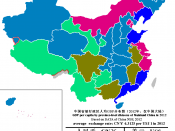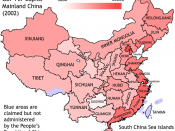1 Apply SWOT-Analyses to SVW in 1985 and 2004 and evaluate the Match between SVW's Strategies and its Internal and External Environments at both Time Points.
1.1 SWOT Analysis 1985
1.1.1 Strengths
In SVW's early days, the availability of an existing network to undertake sales and distribution was an advantage to the joint venture. SVW had strong relationships to the government, since SAIC was under the government's supervision. That helped to find a big market share in China and get large contracts with the government, related companies and taxi fleets.
With the technology and know-how of VW, SVW had a big plus point compared to other local producers.
1.1.2 Weaknesses
SVW used a simple-technology and simple-product strategy. Furthermore there was quite a high cost structure, while sales and the production team where weak. How-ever it could work as long as there were no strong competitors on the market.
1.1.3 Opportunities
There were just a handful of state-owned car plants that produced a few outdated models in a low-tech inefficient environment. There was no company that produced safe passenger cars with an innovative design. Since there were no foreign car pro-ducers in China, SVW could use the "first-mover advantages".
Another opportunity is related to the infrastructure of China. If the government im-proves the infrastructure, the Chinese people are going to see a sense in buying a car in future.
1.1.4 Threats
Many doubted that it would be possible to produce and sell at least 100.000 units per year in China in order to achieve the economies of scale necessary to produce a re-turn on investment. Furthermore experience in other developing countries suggested that a GDP per capita had to reach $ 4000 to $ 6000 before large-scale family car buying could...


